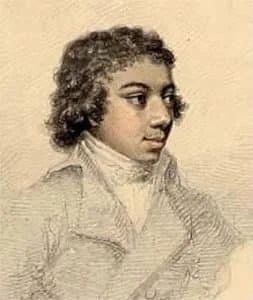The Grosse Fuge: Part 2—The Double Fugue
DAILY DOSE of BEETHOVEN (June 3, 2020)
In Part 1, we discussed the Overture to the Grosse Fuge. Even though it’s amazing, it is still missing something. It captures the change in a single theme, while the body of the Grosse Fuge is a double-fugue—so the change also has to lie in the interaction between two subjects. We don't want to be too literal, but ideas of anything from a marriage in trouble, to street protests over an atrocity, to relations between nations near war come to mind. When the pair of two fugal themes first appears at measure 30, on the word Fuga, there is a large degree of cacophony. It is safe to say that they seem not to be getting along.
Both the Finale of the Ninth Symphony, and the entire Grosse Fuge, are organized around a central double fugue. There are similarities, but again, they take opposite approaches.
Please listen to the attached audio, which addresses this: https://soundcloud.com/user-385773006/the-grosse-fuge-part-2-the-double-fugue
In the Ninth Symphony, the great choral double fugue does not break out until over half-way though the movement. One fugue subject derives from the Ode to Joy is Freude schoner Gotterfunken (Joy, the most beautiful of God's sparks). The other derives itself from what we termed the Greek chorus section—Seid umschlungen Millionen. (Be embraced, O ye millions!) Our overwhelming sense of it, is a dialogue between the creative individual and all of humanity (You may find that discussion in more detail in the May 1, 2020 post).
In the Ninth Symphony, both fugal ideas have been developing over time, and our minds eagerly anticipate where they might go. The emergence of that double-fugue is preceded by an incredible, drawn-out dissonance that makes us feel the answer is on the tip of our tongue. So that when the double-fugue arrives, though we did not anticipate it (it is after all, a creative discovery), in a way, we did! Our minds welcome it, and say Of course that reflects where all of this was heading. Our audio begins with that section of the Ninth Symphony, which follows the tradition, more or less, of a Bach double-fugue, where one idea is developed over time and then a second one introduced (Ft.1).
The Grosse Fuge though, follows more the approach of Handel; or of Mozart’s Requiem (Kyrie section), where the two fugue subjects are introduced together at the beginning. After the overture juxtaposes the changes in the first subject at measure 30, Beethoven marks Fuga, and both Fugue subjects are presented together. Not only that, Beethoven presents two clashing ideas! They need to change if they are to survive! They need to change both themselves and each other. Before they do though, they clash even more, and seem to come right to the brink! The necessary solution will lie in the principles established in 1648, by the Treaty of Westphalia.
You might ask, what does music have to do with a political treaty? The operative principle in that Treaty, which ended the 250 years of religious wars that ground up Europe since 1492, was “The Benefit of the Other." The idea of "looking out for number One", no longer worked. The Thirty Years War of 1618-1648 alone, wiped out 8 million people, including 20% of Germany's population. One’s own interests could not be maintained by subjugating others. The sovereignty of nations was established and made inviolable. Mutual assistance and making sure that other nations progressed as your own did, was discovered to be essential to your own well-being and survival. The double fugue of the Grosse Fuge grew exactly the same way.
The opening of the doble-fugue as presented today, seems like it could hardly be more cacaphonous. Tomorrow, we will experience brinksmanship.
Ft 1: Here we present a very good analysis of Bach's magnificent double (or perhaps triple) fugue in C# minor, from Book One of his Well-Tempered Clavier. It is the same fugue that we presented on May 1st, but with a helpful analysis.




